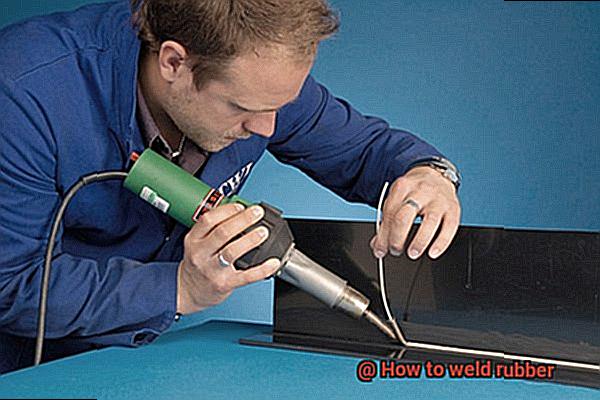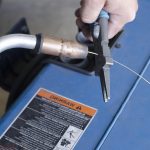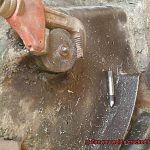Welding rubber?
It may sound impossible, but it’s actually quite simple. With the right equipment and experience, you can easily join two pieces of rubber together.
Whether you’re a hobbyist or a technician repairing a damaged part, welding rubber is an essential skill. In this blog post, we’ll discuss the basics of how to weld rubber and offer tips for success.
Depending on the type of plastic being used, there are several ways to weld rubber. Hot air welding is often used for synthetic materials like EPDM and neoprene; heat melts the edges of the two pieces together.
Ultrasonic welding works with natural rubbers like latex or silicone; high-frequency sound waves create friction between the two pieces and bond them together. Safety should always be your top priority when welding rubber.
Wear protective clothing such as gloves and goggles when working with hot air or ultrasonic welding machines. Make sure your workplace has adequate ventilation too – these processes produce potentially harmful gases that can be dangerous if inhaled.
Having the right equipment is also key to successful projects. You’ll need a hot air or ultrasonic welding machine, as well as other advanced tools such as scrapers and spatulas for shaping and smoothing out any imperfections in your welds.
With all these components in place, you can start making strong and durable welds today.
Types of Rubber That Can Be Welded
Contents
Welding is the most efficient way to repair or modify rubber products, and it’s a common practice in many industries.
But not all types of rubber can be welded together. To know which kind of rubber can be welded, you need to consider the type of material used.
Thermoplastic elastomers and chlorinated polyethylene are two popular types of rubber that can be easily welded together using hot air or hot plate welding techniques. These materials are known for their versatility, lightweight properties, and durability – making them ideal for many different applications.
Ethylene propylene diene monomer is a synthetic rubber often used in roofing, automotive, and construction applications. This material can be bonded together with adhesives or vulcanization techniques, but welding is generally not recommended due to its low resistance to heat.
Silicone is another type of rubber commonly used in medical, food processing, and automotive industries. While it can be glued or bonded with special adhesives, welding silicone is not recommended due to its high melting point.
However, this material can still be bonded using adhesives or vulcanization techniques.
Equipment Needed for Welding Rubber
Welding rubber requires the right tools and equipment to achieve a successful weld.
From heat sources to pressure sources, having the appropriate set up is essential for creating a strong, durable bond. The heat source is key in welding rubber.
Hot air welding and hot wedge welding are two options that can be used. Hot air welding uses a heat gun to produce a stream of hot air, while hot wedge welding utilizes a heated wedge to melt and fuse the rubber together.
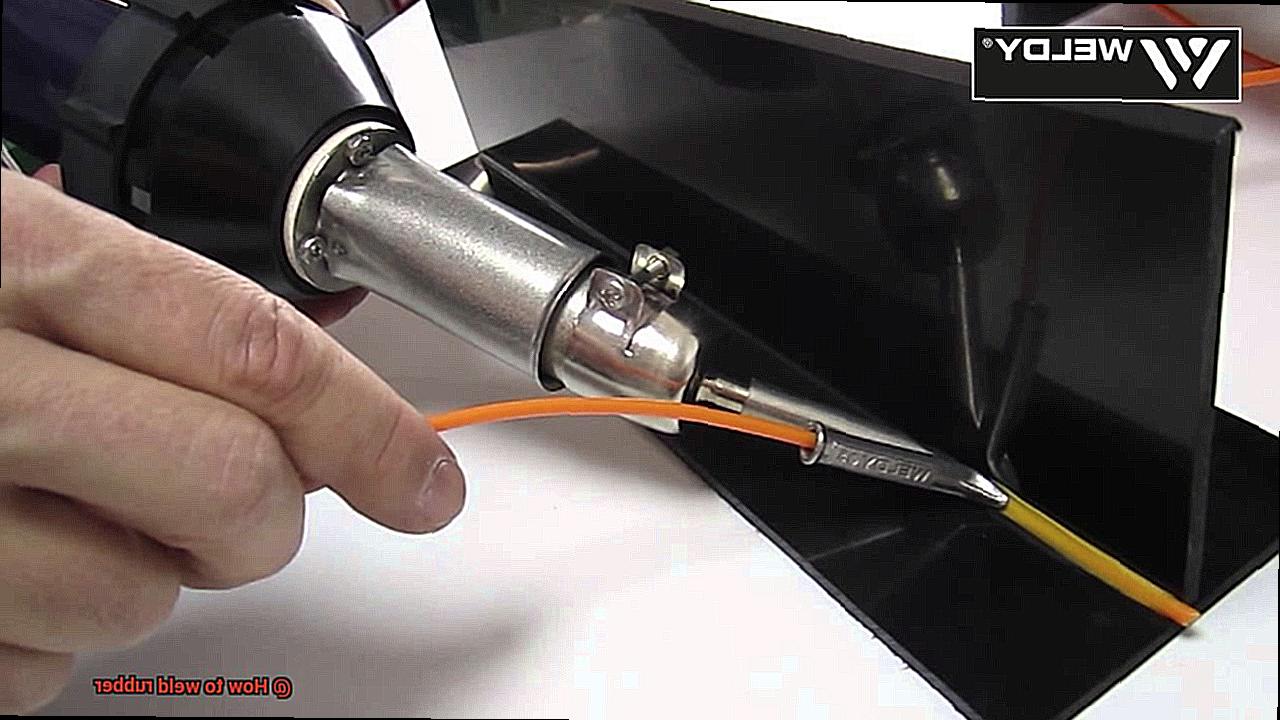
Both methods require precise temperature control in order to prevent any damage being done to the rubber. In addition, you’ll need a pressure source to hold the rubber together during welding.
Clamps, rollers or molds can all be used depending on the size and shape of the material being welded – just like putting together a jigsaw puzzle. A cutting tool such as scissors or a rotary cutter is also necessary for trimming and shaping the edges of your rubber before welding.
This will ensure that your edges are neat and straight so that you can get an even stronger bond in your welds. Finally, if there are larger gaps or holes in your material, filler material may be needed prior to welding.
This can come in either liquid or solid form and should be applied directly before starting to weld.
Step-by-Step Guide to Welding Rubber
Welding rubber is a precise process that requires the right tools, temperature control, and pressure to ensure a successful bond.
But don’t be intimidated – with the right technique, you’ll be able to weld rubber with ease. To start, you’ll need to clean the rubber surfaces that will be welded together.
This will help to eliminate any dirt, dust, or debris that could potentially interfere with the welding process. You can use a cleaning product specifically designed for rubber or simply wipe down the surfaces with a cloth dampened in rubbing alcohol.
Next, clamp the rubber pieces in place tightly using either vise grips or a specialized clamp designed for welding rubber. This will help ensure that they remain firmly in place during welding.
When you’re ready to begin welding, you’ll need either a hot air gun with a specialized welding tip or a handheld plastic welder. Heat up the tip of your tool to an appropriate temperature and use this to melt the edges of your pieces together until you have created a small puddle of molten rubber that can be used to join them together.
It’s important to note that not all types of rubber can be welded together; in some cases, an adhesive or other bonding method may be necessary.
Tips and Tricks for Successful Rubber Welding
Rubber welding may seem like a daunting task, but with the right tools, techniques, and safety protocols, it can be a successful endeavor. Here are five tips and tricks to ensure successful rubber welding every time.
First, it is essential to properly prepare the surfaces before starting the welding process. This involves either sandpaper or a solvent-based cleaner to clean any grime or oils from the rubber that could damage the weld. Additionally, it is important to choose the right filler material for the intended use, as different types of rubber may require different filler materials for optimal weld strength and durability.
When attempting to weld rubber, specialized welding machines made specifically for this purpose should be used. It is also important to adjust the temperature according to the type of rubber being used in order to prevent burning or brittleness. Experimenting with different welding speeds can help determine the right bond strength.
Furthermore, when working with high temperatures and potentially hazardous chemicals, it is critical to follow good safety procedures such as wearing protective gear like gloves and eye protection, as well as ensuring proper ventilation and fire safety measures are in place.
Advantages of Welding Rubber
Welding rubber is a reliable and efficient way to join two pieces of rubber together.
With the right tools and techniques, you can create strong, long-lasting bonds that will withstand even the most demanding conditions. Here are just some of the advantages of welding rubber that make it an ideal choice for any project.
First, welding allows for a seamless bond that is stronger than adhesives or mechanical fasteners. This makes it perfect for applications where a secure and durable connection is required, such as automotive and industrial equipment.
Plus, it can be used to join rubber to other materials like plastics, metals, and fabrics, making it suitable for a wide range of projects. Welding also offers greater precision than other methods.
You can craft clean and consistent bonds that meet your exact specifications with the right equipment and techniques, making it an ideal solution for large-scale production environments. What’s more, welding does not require any harsh chemicals or solvents which makes it safer and more environmentally friendly than traditional bonding methods.
Disadvantages of Welding Rubber
Welding rubber is a complex process that can be both beneficial and challenging.
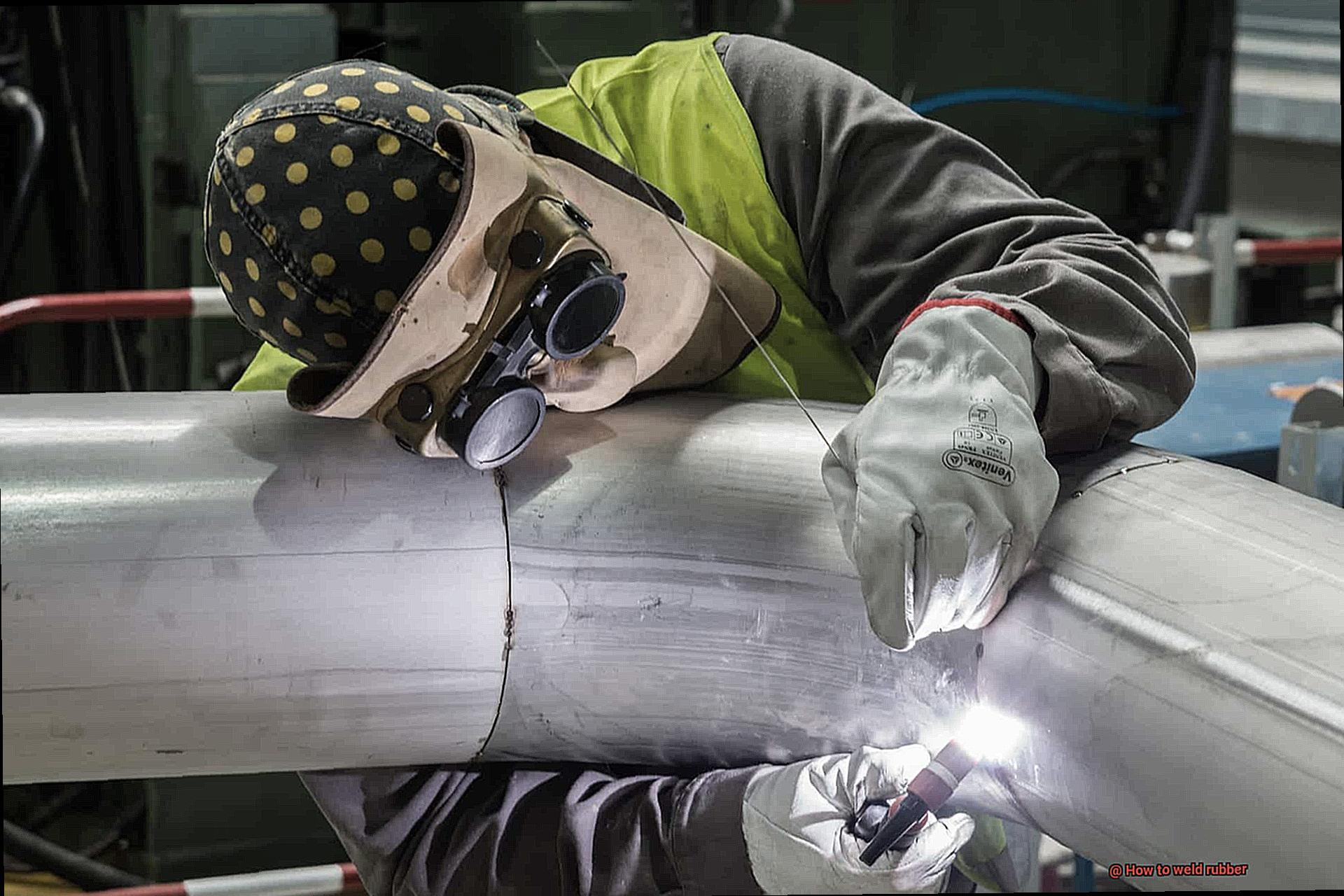
Although it creates a strong and durable bond between two pieces of rubber, there are some drawbacks to consider before starting this type of welding. First and foremost, welding rubber requires a high level of precision and expertise, so inexperienced welders may have difficulty getting the job done correctly.
Additionally, the heat generated during the welding process can cause the rubber to warp or deform, which could compromise the strength and durability of the finished product. Furthermore, finding the right welding equipment and materials for this type of welding can be difficult since it requires specialized techniques.
Moreover, welding rubber is both time-consuming and labor-intensive. This could make it less desirable for those who need to complete projects quickly or have limited funds available.
Despite these disadvantages, welding rubber can still be an effective way to bond two pieces of rubber together that will last for years to come with proper equipment, knowledge, and experience.
Alternatives to Welding Rubber
When it comes to bonding or repairing rubber, welding isn’t always the only option.
In fact, there are many alternatives that can be just as effective and even simpler to use. From adhesives to mechanical fasteners to heat-activated tapes, there are several ways you can join two pieces of rubber together depending on the application and type of rubber.
If you need a quick fix for thin rubber parts, try using an adhesive specifically designed for bonding rubber. These adhesives come in a variety of forms such as liquid, spray, or sealant and work by penetrating the surface of the rubber to create a strong bond.
For heavier duty repairs or components, use mechanical fasteners such as bolts, nuts, or screws to hold the pieces together securely. This method is particularly useful when working with heavy-duty rubber parts or components.
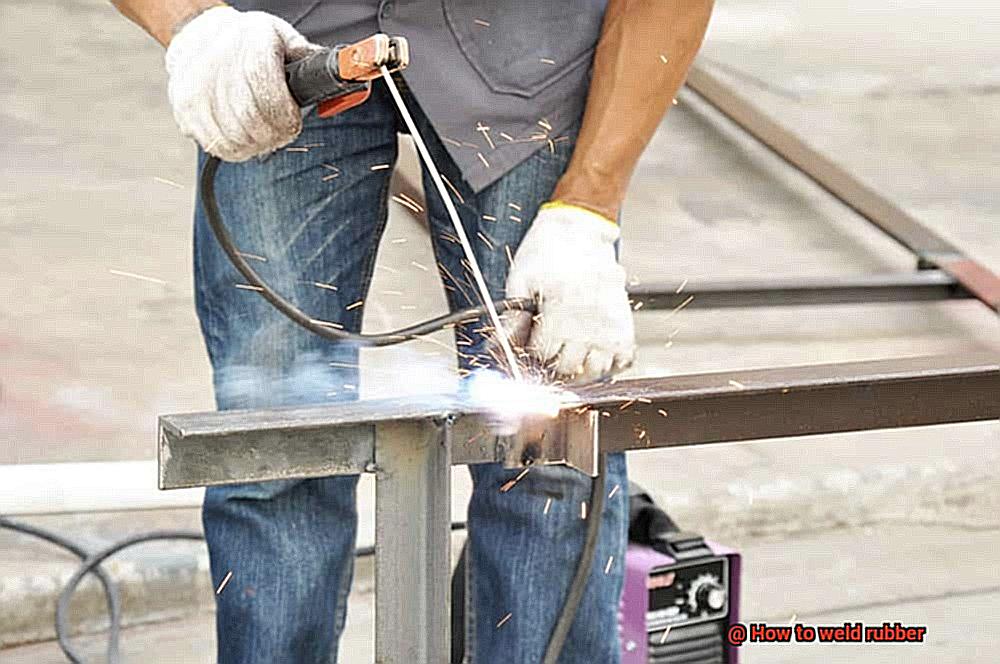
Sewing is another popular option for automotive or marine upholstery repairs. To sew two pieces of thin rubber together securely and efficiently, use a heavy-duty sewing machine or hand-stitching techniques.
wE25yTRWgKA” >
Conclusion
Welding rubber can be a lengthy process, but it’s possible with the right equipment, methods and safety protocols.
When it comes to welding rubber, you need to consider several aspects. From knowing which types of rubber to use to selecting the right equipment – there are many factors to consider.
Hot air welding or ultrasonic welding are two common methods for synthetic and natural rubbers. Additionally, make sure to select the correct filler material for your intended use and adjust the temperature as required by the type of rubber being used.
However, if welding isn’t an option for your project, adhesives or mechanical fasteners may be just as effective.
